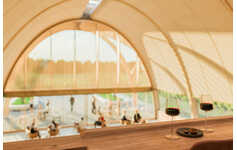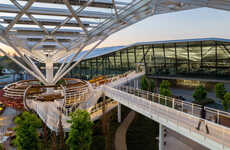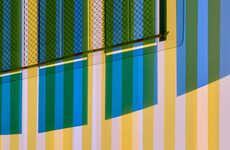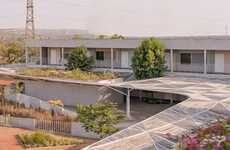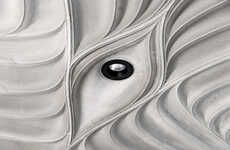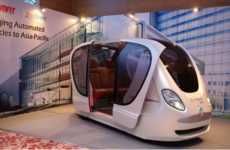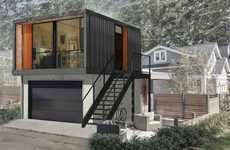
This University Building's Rooftop Consists Of Solar Cells
Rahul Kalvapalle — September 13, 2016 — Art & Design
The building of the Jacobs Institute for Design Innovation, part of the engineering institution over at the University of California, Berkeley, has been equipped with an extraordinarily innovative and high-tech ceiling canopy that consists of solar cells.
Devised by Leddy Maytum Stacy Architects, this particular ceiling canopy benefits from a photovoltaic array capable of churning out 74 kilowatts of energy, enough to meet well over half of the building's energy requirements. The canopy features a design that was devised by the winners of a student design competition, another manner in which it seeks to further the cause of energy-positive architectural design.
The fact that this solar cell-sheathed ceiling canopy is located atop this particular building is highly appropriate considering that the institution's mission to explore design philosophies and methods for a better future.
Devised by Leddy Maytum Stacy Architects, this particular ceiling canopy benefits from a photovoltaic array capable of churning out 74 kilowatts of energy, enough to meet well over half of the building's energy requirements. The canopy features a design that was devised by the winners of a student design competition, another manner in which it seeks to further the cause of energy-positive architectural design.
The fact that this solar cell-sheathed ceiling canopy is located atop this particular building is highly appropriate considering that the institution's mission to explore design philosophies and methods for a better future.
Trend Themes
1. Solar Energy Integration - Using solar cells in architectural designs to generate renewable energy and reduce dependence on traditional power sources.
2. Energy-positive Architecture - Designing buildings and structures that produce more energy than they consume, leading to a sustainable and environmentally-friendly future.
3. Student-led Design Innovation - Engaging students in design competitions to drive innovative solutions and push the boundaries of architectural possibilities.
Industry Implications
1. Architecture - Incorporating solar cell technology into building and structure designs to create energy-efficient and environmentally-friendly spaces.
2. Renewable Energy - Advancing the integration of solar cells and other renewable energy sources to reduce reliance on fossil fuels and promote a sustainable energy future.
3. Education - Utilizing student competitions and collaborations to foster innovation in design and inspire the next generation of architects and engineers.
1.6
Score
Popularity
Activity
Freshness



